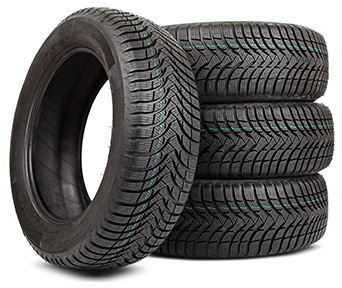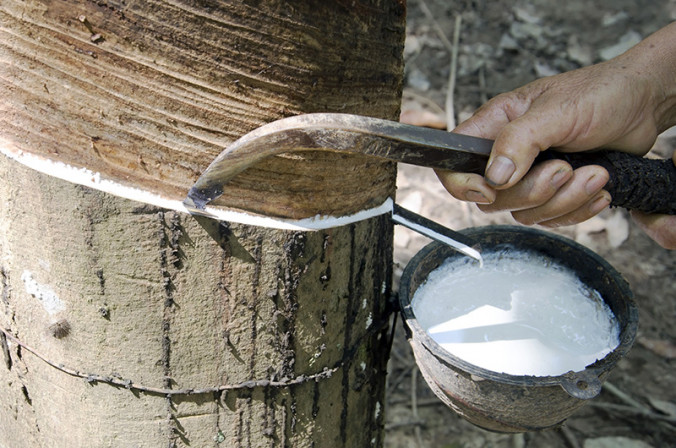Rubber trees (Hevea bransiliensis) are tall deciduous trees growing to a height of up to 45 metres in the wild, but cultivated trees are usually much smaller because drawing off latex restricts growth. The inner bark oozes latex when damaged.
Native to the Amazon and Orinoco river basins of Brazil, Venezuela and Colombia, rubber trees where originally called caoutchouc, from the indigenous cauchy, or ‘weeping wood’. The rubber tree is a member of the Euphorbiaceae (spurge) family. Its creamy latex is a suspension in water of about 50 per cent rubber ready to be excluded and quickly coagulate to seal wounds. In fact when incisions are made to tap latex, anti-coagulant chemicals are applied to keep the latex running.
Rubber trees take between seven and ten years to deliver their first latex harvest. Harvesters make incisions across the latex vessels, just deep enough to tap the vessels without harming the tree, and the latex is collected in small buckets. This process is known as ‘rubber tapping’.
As latex production declines with age, rubber trees are generally felled when they reach the age of 25 to 30 years. The earlier practice was to burn the trees, but in recent decades the wood is the basis of a substantial furniture manufacturing industry, notably in Malaysia.
In 1531 Aztecs caused a stir at the Spanish Court with previously unknown bouncy rubber balls. By the 1770s the British were using coagulated Hevea latex for rubbing out pencil marks (hence the name ‘rubber’), and in London little cubes of ‘India rubber’ fetched three shillings each – a small fortune at the time.
For centuries tribes in the upper Amazon basin had been using rubber to mould shoes, and for waterproofing long before the 1820s, when the Scotsman Charles Macintosh used dissolved rubber to treat fabric for his famous rainwear.
Unfortunately, rubber straight from the tree cracks in the cold and becomes gummy in the heat. In 1839 Charles Goodyear discovered that ‘cooking up’ raw rubber with sulphur made it tough and resistant to extremes of temperature. This ‘vulcanised’ rubber appeared everywhere in pumps, steam engines, combs and corsets.’
Demand for rubber soon far exceeded supply. The price rocketed, leading to a disorderly Amazon ‘rubber rush’ of men staking claims and over exploiting wild trees. In 1876, Sir Henry Wickham shipped a consignment of 70,000 rubber seeds from Brazil to Kew Gardens. From there, seedlings were distributed to British colonies in Asia, where they were propagated with great success – the ancestors of today’s huge rubber plantations.
Rubber hit the road in 1888 when John Boyd Dunlop patented the first successful inflatable rubber bicycle tyre. In the early twentieth century pneumatic tyres, rubber seals, gaskets, mats and hoses for vehicles gave rise to companies such as Firestone, Goodyear, Michelin and Pirelli.

Modern car tyres… by the late 1930s a million tons of crude rubber was exported annually from South East Asia..
By the late 1930s a million tons of crude rubber was being exported annually from South East Asia, and it was the single most valuable import into the United States. The occupation of most rubber plantations by Japanese forces in World War II prompted the urgent development of synthetic rubber from fossil fuels and their by-products. However, half of all rubber still comes from trees, grown most prolifically now in Thailand and Indonesia.
